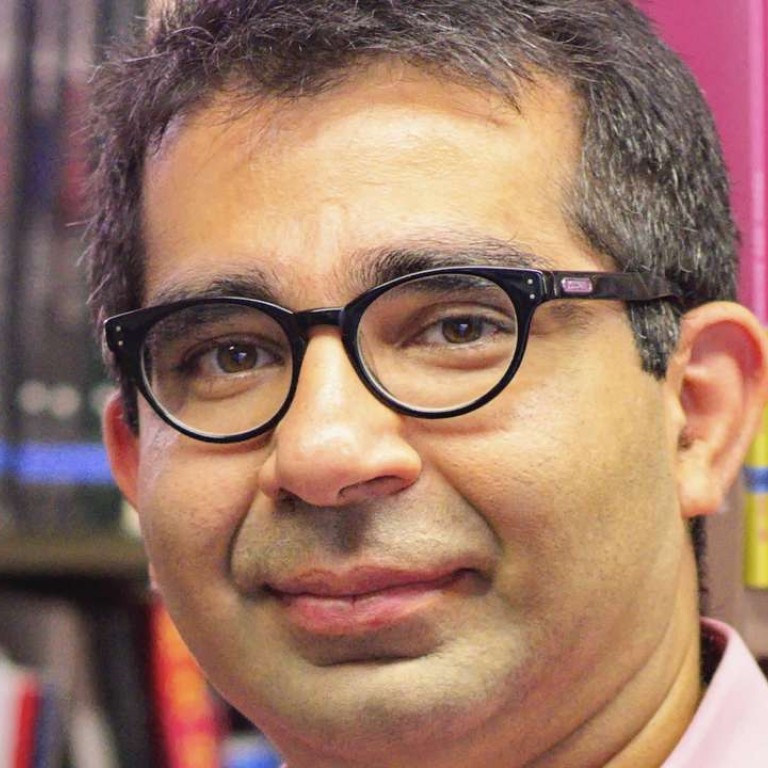
Hong Kong-based art researcher’s next job: curating UAE’s Venice pavilion
Hammad Nasar, of Asia Art Archive, to present a ‘complex’ view of the Emirates at 2017 Venice Biennale
The Salama bint Hamdan Al Nahyan Foundation – the philanthropic organisation founded by the wife of Abu Dhabi’s crown prince – approached Nasar about the job after he signed a petition last June against the country’s decision to bar three labour rights campaigners from entering the country.
“I thought it was interesting that they picked me, although it was not completely unexpected because I have worked with the director of the pavilion before and they all know me well,” says the Pakistan-born curator and art writer from London.
Nasar, who will finish his four-year stint in Hong Kong at the end of the year, says he is intrigued by the many parallels between the UAE and Hong Kong – both port cities that are historically outward looking, both heavily reliant on foreign workers and both in the process of building vast museums – as well as differences, such as the UAE’s genuine multiculturalism.
He says he was upfront in his proposal about presenting a “complex” view of the UAE that addresses, in particular, the country’s unusual demographic – more than 80 per cent of its population of about 9 million are expatriates.

The emirates have a poor human rights record, with restrictions on the freedom of expression, the unequal treatment of women and the working and living conditions of foreign workers.
That last issue led to Nasar and about 60 others from the art world to sign a petition last June against the UAE’s decision to bar two artists and an academic from entering the country – a decision linked to the fact the three are involved in Gulf Labor, a coalition of artists fighting for better working conditions at the construction sites of the future Abu Dhabi outposts of the Louvre, the Guggenheim and a new national museum supported by the British Museum.
With Hong Kong show, Lebanese-American artist Walid Raad subverts the idea of the canon
“We the undersigned oppose the barring of Ashok Sukumaran, Walid Raad and Andrew Ross from the UAE. We state that denying artists visas, stopping and deporting them after years of their work in the region, creates a chilling precedent and makes it difficult for arts and academic institutions in the UAE, and those working with the UAE to claim regional dialogue and artistic freedom,” the statement said.
Raad, who was detained for 24 hours in Abu Dhabi before his deportation in May, was the AAA’s artist-in-residence in 2014 and recently returned with an onsite exhibition based on his research into the life and work of Hong Kong artist Ha Bik-chuen.

Nasar says he stands by the statement he signed and that he remains concerned about the conditions for the builders on Saadiyat Island, the equivalent of Hong Kong’s West Kowloon Cultural District that the UAE hopes to turn into an international cultural landmark.
He dismisses concerns that real-life issues will not get enough attention at the 57th Venice Biennale under curator Christine Macel, who set the theme of “Viva Arte Viva” in order to turn the focus back on art and artists themselves.
“You can’t keep the world from art. Artists should not be detached from where they are living and the world,” he says.
The UAE pavilion will feature a group of artists and will show how play – as in being fun, imaginative and thinking in a non-linear fashion – is reflected in their artistic practices.
It may sound tame but Nasar says it is one way of examining how artists create in a society where they face many cultural constraints.
Nasar stresses that he will not use the pavilion as a place to prescribe his views as an outsider either. “I don’t believe in curators who parachute in and do something spectacular. The exhibition has got to be a meaningful continuation of what local artists have done,” he says.

